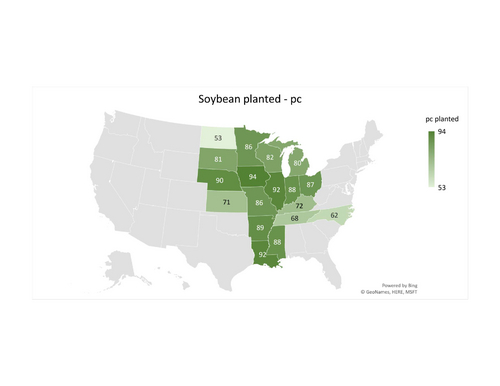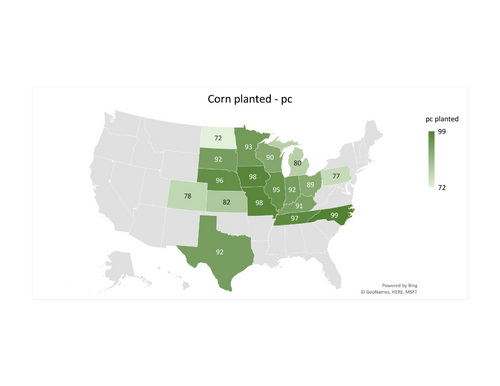The US Department of Agriculture (USDA) reported corn crop conditions as 69pc good to excellent in its first week of ratings for the crop as planting for corn, soybeans and spring wheat wraps up and the focus shifts to crop conditions.
The highest rating for the corn crop in the week ending 28 May compared with 73pc rated good to excellent in the same week last year. Corn crops in poor to very poor conditions were at 5pc compared with 4pc last year.
Corn planting is nearly complete with 92pc of the US corn crop planted compared with 84pc for the five-year average and only four states slightly behind their five-year average. With favorable weather, North Dakota was able to nearly catch up to its five-year average. North Dakota planting jumped by 40 percentage points to 72pc complete for the week ending 28 May compared with the five-year average of 73pc.
Soybean crop conditions will be released next week. The soybean crop was 83pc planted, with North Dakota being the only state behind its five-year average at 53pc planted for the week compared with 55pc for the five-year average.
Spring wheat is also 85pc planted for the latest week compared with the five-year average of 86pc. The six reporting states are nearly complete with Washington at 100pc planted, South Dakota at 99pc, Idaho with 99pc planted, Minnesota at 97pc, Montana at 81pc and North Dakota at 79pc.
The winter wheat harvest will begin to be reported next week. Winter wheat conditions slightly improved to 35pc poor to very poor for the week ending 28 May compared with 40pc poor to very poor the prior week. Oklahoma and Texas conditions improved, with Texas at 40pc poor to very poor compared 45pc the prior week and Oklahoma 27pc poor to very poor for the week compared with 52pc in the prior week. Conversely, Nebraska deteriorated to 51pc poor to very poor for the week compared with 36pc poor to very poor a week prior. Kansas conditions stayed constant at 69pc poor to very poor for the week.
By Eduardo Gonzalez




